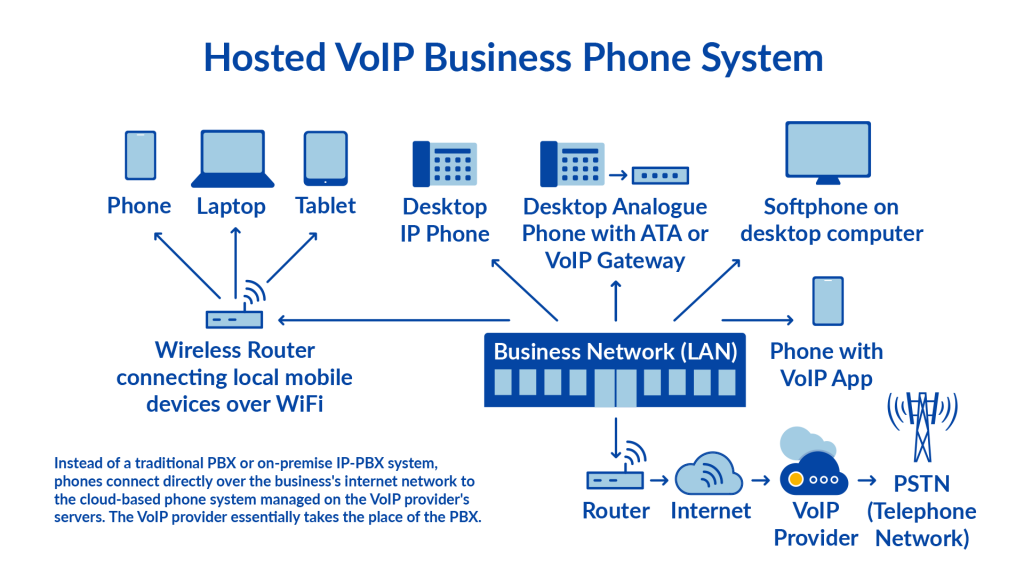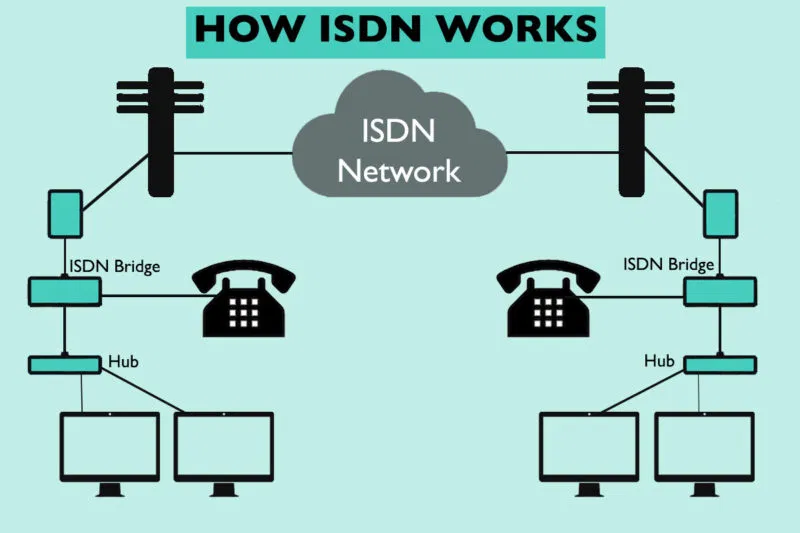PSTN and ISDN 2025 Switch Off – What You Need To Know
PSTN’s life expectancy expires in December 2025 due to aging.
What is ISDN?
It is possible to have 2 ISDN channels or 8 ISDN channels with ISDN2, which supports channels in pairs. In general, ISDN30 is offered to larger business customers, choosing between 8 and 30 ISDN channels. One ISDN channel can support one concurrent call. Traditional telephony, including fixed lines and PSTN services, will be withdrawn at the end of December 2025.
What’s going on?
The PSTN (public switched telephone network) is being replaced with a fully digital network for all our customers. They have already begun. They plan to move everyone over by 2025 when Openreach stops providing PSTN (and ISDN) services. Rather than using the traditional PSTN, all phone lines in the UK will be digital by then.
Who is included in this BT Switch off in 2025?
Everyone is included, whether it’s home or business. There’s more to consider than your phone service. Currently, all non-voice services are connected to PSTN or ISDN lines using the old phone network. Alarms, EPOS machines, doors, CCTV, and fax machines are examples.
What is the reason for phasing them out?
ISDN and PTSN technologies are not suitable for modern telecommunications. Telephony is headed toward the future, thanks to IP telephony. At last, BT has recognized the importance of IP telephony. In the past decade, many businesses have shifted to these technologies, reducing the need for legacy systems. Especially since the setup and design are identical to the original 1800s phone lines.
How are PSTN and ISDN being replaced?
ISDN will be replaced primarily by VoIP technology. Voice over Internet Protocol, or VoIP, allows you to deliver your telephone service over the internet. You will no longer need expensive, old-fashioned analog phone lines in your offices as it only requires an internet connection to work. Compared to ISDN lines, VoIP offers higher call quality, flexibility, and features.
There is also a protocol called Session Initiation Protocol (SIP) that can be used in addition to VoIP. VoIP is enabled by SIP trunks, which connect your IP phone system to the public phone network. Those switching to internet-based phone solutions often choose SIP since it can be connected to most existing systems.

Is IP better than PSTN?
Yes. PSTN networks are increasingly out of step with modern communications demands since they are essentially 20th-century technologies. People expect much more than traditional technologies can provide with the shift to mobile and internet communications. That’s why we’re switching to IP. The time has come to transition from PSTN to digital.
When will Openreach begin withdrawing services?
Openreach has yet to confirm its plan to withdraw WLR and ISDN telephony products. It is unclear whether their UK-wide withdrawal strategy will be at the exchange level, geographical area, or premise technology level. Openreach has started trailing the withdrawal in two exchanges as early as September 2019.
In their Salisbury Exchange, Wiltshire, CPs expect Openreach to issue a formal notification of stop sales on this date. WLR and ISDN will be fully withdrawn from this exchange by December 2022 as part of the Openreach Full Fibre Trial. First Single Order (SO) trials will begin circa January 2020 on the Mildenhall Exchange.
Even if fibre is unavailable, this exchange will focus on a complete withdrawal of services by December 2022. A SIP Trunking service or hosted PBX system license will be required for premises serviced by the Mildenhall Exchange to be replaced by SOGEA and SOTAP products.
How should you proceed?
You can switch to an IP telephony system with the right partner, but we recommend you consider a few factors first.
-
System you currently use
Depending on the number of users, there may already be some hardware in your business. Whether you run a small shop, hairdressers, or something similar, you’ll benefit from switching to a fully hosted solution as it’s low cost and easy to add new users or setup features like call forwarding in the future.
You might want to adapt your existing PBX equipment after the switch-off if you are a larger business with an on-site PBX. In this case, your PBX must support IP telephony if you are considering a SIP solution; otherwise, putting in a new system on-site may not be worth the cost. You might consider a hosted solution to avoid the high upfront costs. Take a look at our top 5 VOIP business phones.
-
Connectivity
It would be best to have a reliable and fast broadband connection when switching to a system that relies heavily on it. Take a leased line if you can afford it for guaranteed, uncontested speeds and service level agreements from your provider.
-
Porting numbers
Prepare to port your numbers over in good time if you are planning to switch systems. It is necessary to port your phone numbers from your old provider to your new provider if you use location-specific numbers or want to keep all your existing numbers.
To avoid any business disruption, inform your provider at a good time about the number porting, as it usually takes a few weeks.
-
Flexibility
It is worth focusing on whether you need a system that can easily be transferred between locations with more businesses working flexible hours from home or a mixture of home and office. Then we strongly recommend using a hosted phone system, allowing your staff to use it as a softphone on their computer wherever they are, whether at work, at home.
-
Features
Your current phone system might need some new features depending on your use. Know precisely what you’re looking for and ask your provider what features are included and what can be added. Choosing a new solution shouldn’t lead to you realising later that it lacks the necessary functionality.
You can see our full business phone system feature list here.
Conclusion
Changing IP technology may involve migrating to a new service, but several benefits exist. The benefits include cost savings, improved resilience, and better call quality across your organization.
Contact us if you wish to chat about changing over your business phone system.

